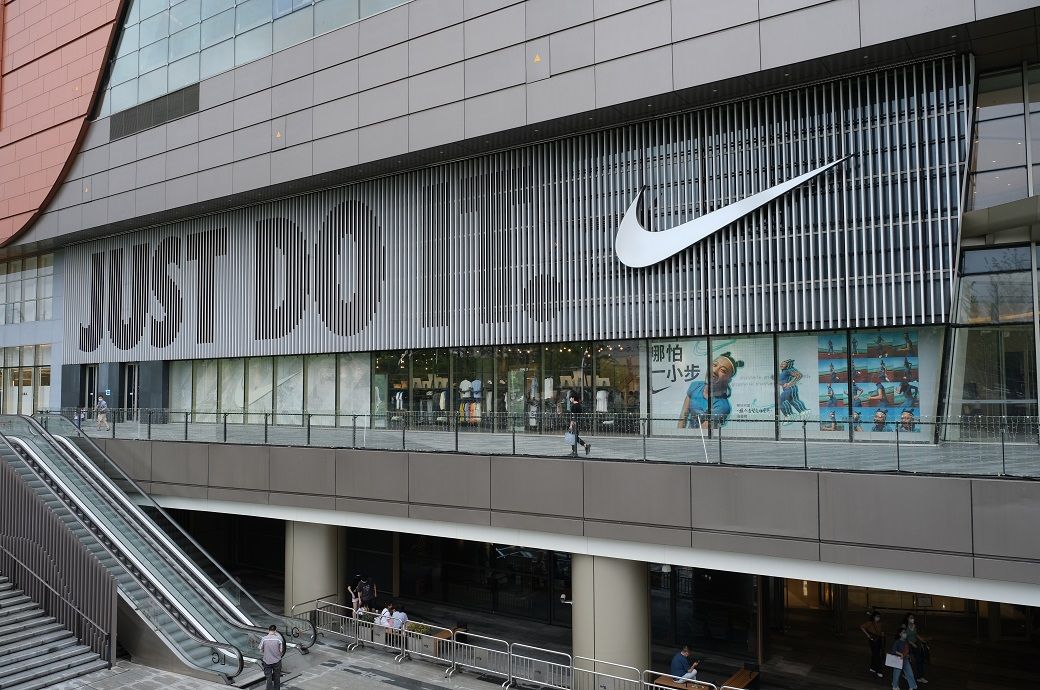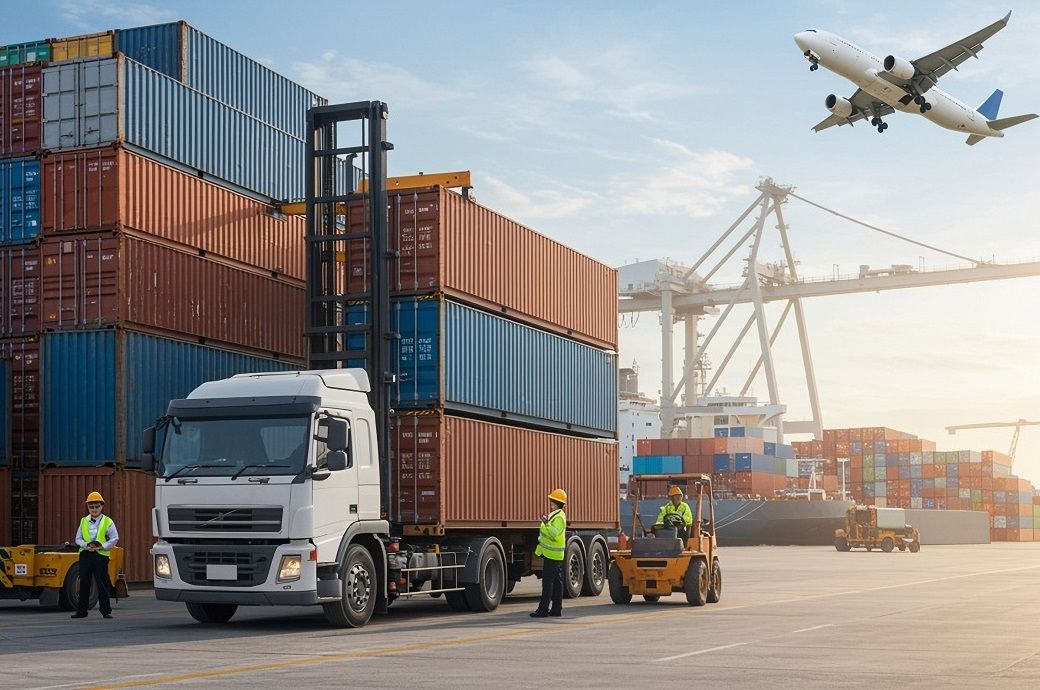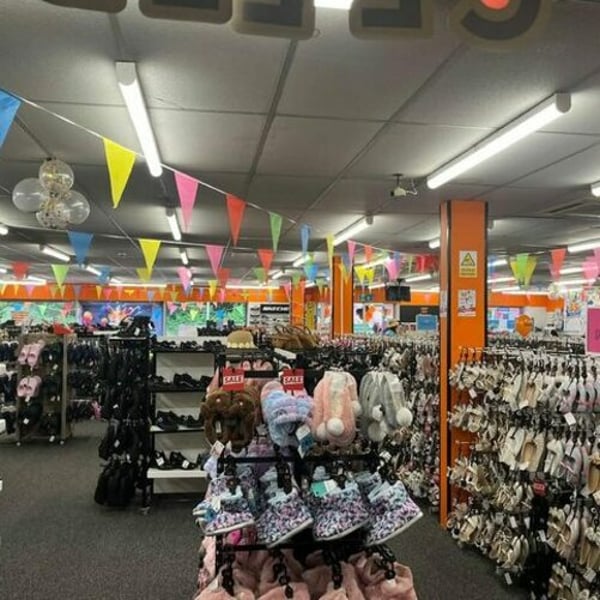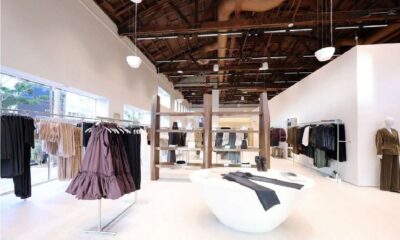Fashion
US’ Nike Q1 FY26 revenues edge up, profits drop 31%

The gross margin contracted 320 basis points (bps) to 42.2 per cent, reflecting higher discounts, channel mix, and increased tariffs in North America. Selling and administrative expenses decreased 1 per cent to $4.0 billion, while demand creation expense fell 3 per cent to $1.2 billion due to lower brand marketing. Operating overhead remained flat at $2.8 billion.
Nike Inc has reported revenue of $11.7 billion in Q1 FY26, up 1 per cent YoY, though currency-neutral revenue slipped 1 per cent.
Nike Brand rose 2 per cent, while direct fell 4 per cent and wholesale gained 7 per cent.
Converse dropped 27 per cent.
Net income fell 31 per cent to $727 million, with EPS down 30 per cent.
Margins weakened amid tariffs and discounts.
Nike Brand revenues were $11.4 billion, up 2 per cent reported and flat on a currency-neutral basis, with growth in North America offset by a decline in Greater China. Nike direct revenues fell 4 per cent to $4.5 billion, driven by a 12 per cent decline in digital sales and a 1 per cent drop in Nike-owned retail stores. Wholesale revenues rose 7 per cent to $6.8 billion, with a 5 per cent gain currency neutral. Converse revenues plunged 27 per cent to $366 million, reflecting declines across all territories, Nike said in a press release.
The company posted a net income of $727 million, down 31 per cent, with diluted earnings per share falling 30 per cent to $0.49. The effective tax rate rose to 21.1 per cent from 19.6 per cent last year.
Region-wise, North America saw an increase in its revenue of 4 per cent, led by apparel and equipment. Europe, Middle East, and Africa (EMEA) saw a rise of 6 per cent, driven by footwear and apparel. Greater China was down 9 per cent, reflecting an 11 per cent drop in footwear. Asia Pacific and Latin America went up 2 per cent, boosted by apparel sales.
The company’s inventories declined 2 per cent to $8.1 billion, reflecting fewer units but higher costs from tariffs. Cash, equivalents, and short-term investments fell to $8.6 billion, down $1.7 billion due to dividends, share repurchases, bond repayments, and capital spending, added the release.
“This quarter Nike drove progress through our Win Now actions in our priority areas of North America, Wholesale, and Running,” said Elliott Hill, president and CEO at Nike, Inc. “While we are getting wins under our belt, we still have work ahead to get all sports, geographies, and channels on a similar path as we manage a dynamic operating environment. I am confident that we have the right focus in Win Now and that our new alignment in the Sport Offense will be the key to maximising Nike, Inc’s complete portfolio over the long-term.”
“I am encouraged by the momentum we generated in the quarter, but progress will not be linear as dimensions of our business recover on different timelines,” said Matthew Friend, executive vice president and chief financial officer at Nike, Inc. “While we navigate several external headwinds, our teams are focused on executing against what we can control.”
Fibre2Fashion News Desk (SG)
Fashion
Mielle becomes NFL’s first textured haircare partner

Published
December 1, 2025
Textured haircare brand Mielle has launched a new partnership with the National Football League, marking the League’s first collaboration with a textured haircare company.
The campaign aims to support the millions of NFL fans with textured hair—women now make up about half of the NFL’s fanbase—while addressing the unique hair challenges faced by athletes wearing helmets, including dryness, breakage and frizz.
The partnership expands Mielle’s growing footprint in professional sports and is designed to boost representation, access to high-quality care, and product innovation for textured-hair athletes and fans.
“The NFL is excited to have Mielle, a brand that is committed to performance, community, and empowering fans and athletes, lean into the NFL partnership” said Tracie Rodburg, SVP global partnerships, NFL.
“This partnership aligns with the league’s mission to build lasting connections within our communities nationwide and celebrate the self-expression of our players and fans.”
The P&G brand says the collaboration gives Mielle a major platform to showcase the performance of its dermatologist-reviewed, Skin Health Alliance–accredited formulas under real athletic conditions.
“We’re honored to be the first textured hair care partner of the NFL through our partnership with P&G,” said Monique Rodriguez, founder and CEO, Mielle. “For so many of us, football represents family and community. It’s attending cookouts, tailgates, reconnecting with family and friends, and showing up in your favorite team colors. And for millions of fans, that includes twisting, braiding, and caring for your textured hair before kickoff.”
The announcement is accompanied by a social-first campaign, including the viral “Passing the Phone” video moment featuring talents across the league from including players, executives and agents, to players’ families and on-air talent.
Copyright © 2025 FashionNetwork.com All rights reserved.
Fashion
India’s logistics push puts fashion in the fast lane

The government’s three-year scorecard backs this up. Since its launch in September ****, ULIP has integrated more than thirty logistics and customs systems and clocked over *.* billion (***+ crore) API transactions as of around August ****, effectively treating data flows like rails. LDB, operational since July ****, has cumulatively tracked over ** million EXIM containers across *** inland container depots (ICDs) by around August ****, turning container visibility from a premium add-on into the default. A Transportation Emissions Measurement Tool (TEMT), developed by IIM Bangalore and partners and endorsed by DPIIT, now gives exporters an ISO-*****-aligned way to report logistics emissions, so freight can sit alongside product footprints in sustainability dossiers.
From Map to Mill Gate: What Gati Shakti Has Actually Changed
Fashion
Modella eyeing another acquisition, this time it’s the Wynsors footwear chain

Published
December 1, 2025
Modella Capital is fast becoming one of the most acquisitive businesses on the UK high street and the latest retailer in its sights is footwear chain Wynsors World of Shoes.
That’s according to Sky News, which said the investment firm is targeting a takeover of the privately owned footwear retailer and is currently in “advanced talks”.
Wynsors trades from around 50 standalone shops across the north of England and Modella is now “the likeliest buyer” of the business, with expectations of a deal before the end of the year.
Modella was recently in the news as the buyer of Claire’s UK business. It also recently bought the non-travel locations of WH Smith (now renamed TG Jones) and owns Hobbycraft and The Original Factory Shop too. It had earlier hoped to add Poundland to its portfolio but missed out on that one.
Wynsors has been looking to sell for around two months and accountancy firm RSM had been hired explore interest from prospective bidders, Sky News said.
The chain trades from around 50 standalone stores and 40 concessions. It sells brands including Adidas, Skechers, Hush Puppies, Clarks, Nike, kickers and more. And although its sells footwear for women, men and children, it focuses particularly on school shoes.
Copyright © 2025 FashionNetwork.com All rights reserved.
-

 Sports1 week ago
Sports1 week agoWATCH: Ronaldo scores spectacular bicycle kick
-

 Entertainment1 week ago
Entertainment1 week agoWelcome to Derry’ episode 5 delivers shocking twist
-

 Politics1 week ago
Politics1 week agoWashington and Kyiv Stress Any Peace Deal Must Fully Respect Ukraine’s Sovereignty
-

 Business1 week ago
Business1 week agoKey economic data and trends that will shape Rachel Reeves’ Budget
-

 Tech6 days ago
Tech6 days agoWake Up—the Best Black Friday Mattress Sales Are Here
-

 Politics1 week ago
Politics1 week ago53,000 Sikhs vote in Ottawa Khalistan Referendum amid Carney-Modi trade talks scrutiny
-

 Fashion1 week ago
Fashion1 week agoCanada’s Lululemon unveils team Canada kit for Milano Cortina 2026
-

 Tech6 days ago
Tech6 days agoThe Alienware Aurora Gaming Desktop Punches Above Its Weight

















